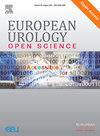Diagnostic Accuracy of Indocyanine Green–stained Sentinel Lymph Nodes in Prostate Cancer Patients: A Systematic Review and Meta-analysis
IF 3.2
3区 医学
Q1 UROLOGY & NEPHROLOGY
引用次数: 0
Abstract
Background and objective
Indocyanine green-guided sentinel lymph node dissection (ICG-SLND) has demonstrated good diagnostic accuracy for lymph node metastasis in prostate cancer. This study aims to perform a meta-analysis of the diagnostic accuracy of ICG-SLND at both the per-patient and the per-node level.
Methods
We conducted a literature search on PubMed and Embase for relevant studies published up to June 2024. The inclusion criteria were prostate cancer patients undergoing radical prostatectomy, ICG-SLND, and subsequent extended pelvic lymph node dissection (ePLND). Data were extracted to calculate the pooled sensitivity and negative predictive value (NPV) at both the per-patient and the per-node level.
Key findings and limitations
Our search identified 13 relevant studies, comprising a total of 748 patients. All studies were assessed as having a low risk of bias. At the per-patient level, the pooled sensitivity of ICG-SLND for diagnosing lymph node metastasis was 0.87 (95% confidence interval [CI]: 0.77–0.92), with a pooled NPV of 0.95 (95% CI: 0.90–0.98). At the per-node level, the pooled sensitivity was 0.53 (95% CI: 0.45–0.62), and the pooled NPV was 0.98 (95% CI: 0.97–0.98). Significant heterogeneity was observed in the per-node level sensitivity, NPV, and sentinel lymph node detection rate outcomes. The primary limitation is the lack of investigation into the impact of ICG-SLND on survival outcomes.
Conclusions and clinical implications
The per-patient level sensitivity of ICG-SLND for diagnosing lymph node metastases is 87%, which better represents the diagnostic accuracy of ICG-SLND than the per-node level sensitivity. As ePLND has demonstrated a positive impact on oncologic outcomes, ICG-SLND cannot yet be recommended as the standard lymph node dissection approach. The significant heterogeneity observed in the pooled results highlights the need for further research to determine the optimal injection methods.
Patient summary
Indocyanine green–guided sentinel lymph node dissection (ICG-SLND) has demonstrated favorable performance for diagnosing lymph node metastases in prostate cancer. The per-patient level sensitivity of ICG-SLND provides better diagnostic performance than its per-node level sensitivity. However, further research is needed for ICG-SLND to be recommended as the standard approach for lymph node dissection.
求助全文
约1分钟内获得全文
求助全文
来源期刊

European Urology Open Science
UROLOGY & NEPHROLOGY-
CiteScore
3.40
自引率
4.00%
发文量
1183
审稿时长
49 days
 求助内容:
求助内容: 应助结果提醒方式:
应助结果提醒方式:


